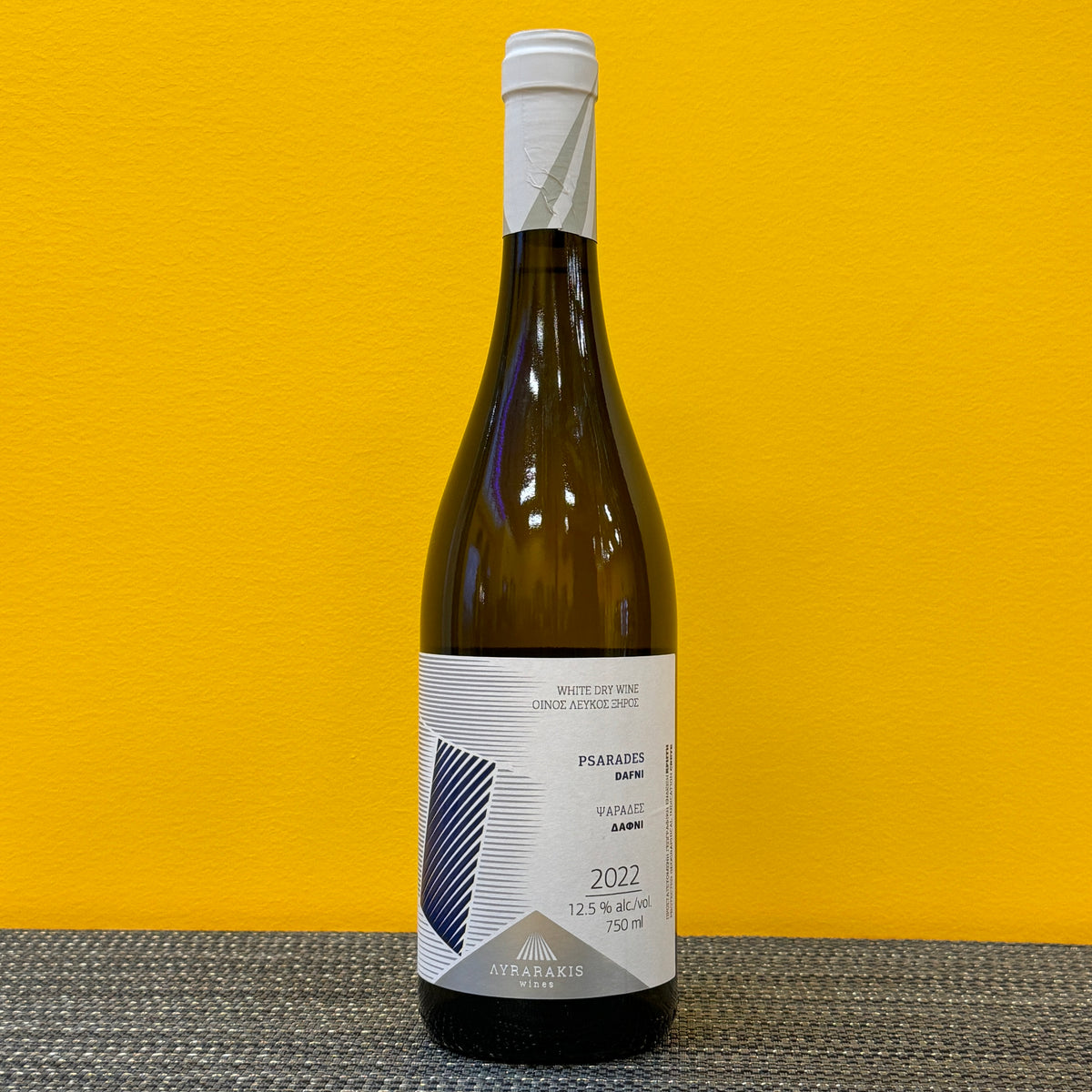Dafni Psarades 2022, Lyrarakis
- Regular
- $25.00
- Sale
- $25.00
- Regular
- Unit Price
- per
The Dafní grape variety was saved from extinction by the Lyrarakis family, when it was planted in the “Psarades” family vineyard at 480m altitude in central Crete in the early '90s. Its name derives from the bay laurel plant, which is called “Dáfni” in Greek, and the wine has a distinctive herbal character, accompanied by a refreshing citrus fruit note. Deliciously crisp, and excellent with seafood and lighter dishes.
The heart and soul of what Lyrarakis is doing is based on a series of vineyards, bottled in what they call their “single area” line of wines. These range from Kedros in the central western heights to the high-altitude Vóila Plain in the far east. There are currently eleven of these special sites, each labeled by the name of the grape followed by the name of the site, and each site is outlined on its label by colored topography.
Lyrarakis has rescued three varietals from obscurity and almost certain extinction from phylloxera: Dafni (DNA traces of which have been found in Minoan wine vessels), Plytó, and Melissaki. No one else on the island is currently making wine from these grapes.
In the cellar, the touch is light, and tailored to each varietal and site; Myriam de-stems grapes, or uses whole berry, or whole cluster, or combinations thereof. Her white wines finish with refreshingly low octanes, and they’re as much about texture and salinity as about overt fruit. They don’t typically undergo malo because the malic acid is low, and they make fabulous seafood wines. As for those wonderful descriptions on the labels, Myriam writes them.
Most of the vineyard parcels the family works with are non-irrigated and are hand-harvested. Many are head-pruned, especially those in windy sites where trellised systems can be risky (such zones often sport columns of modern wind turbines, each with a sensor that shuts them down when the wind exceeds safe speeds). In addition, often these parcels are inter-planted, as tradition mandated. These are old vines, and old vines on Crete means own-rooted pre-phylloxera vines planted at random in small–often very small–parcels that have supported vines for centuries.



